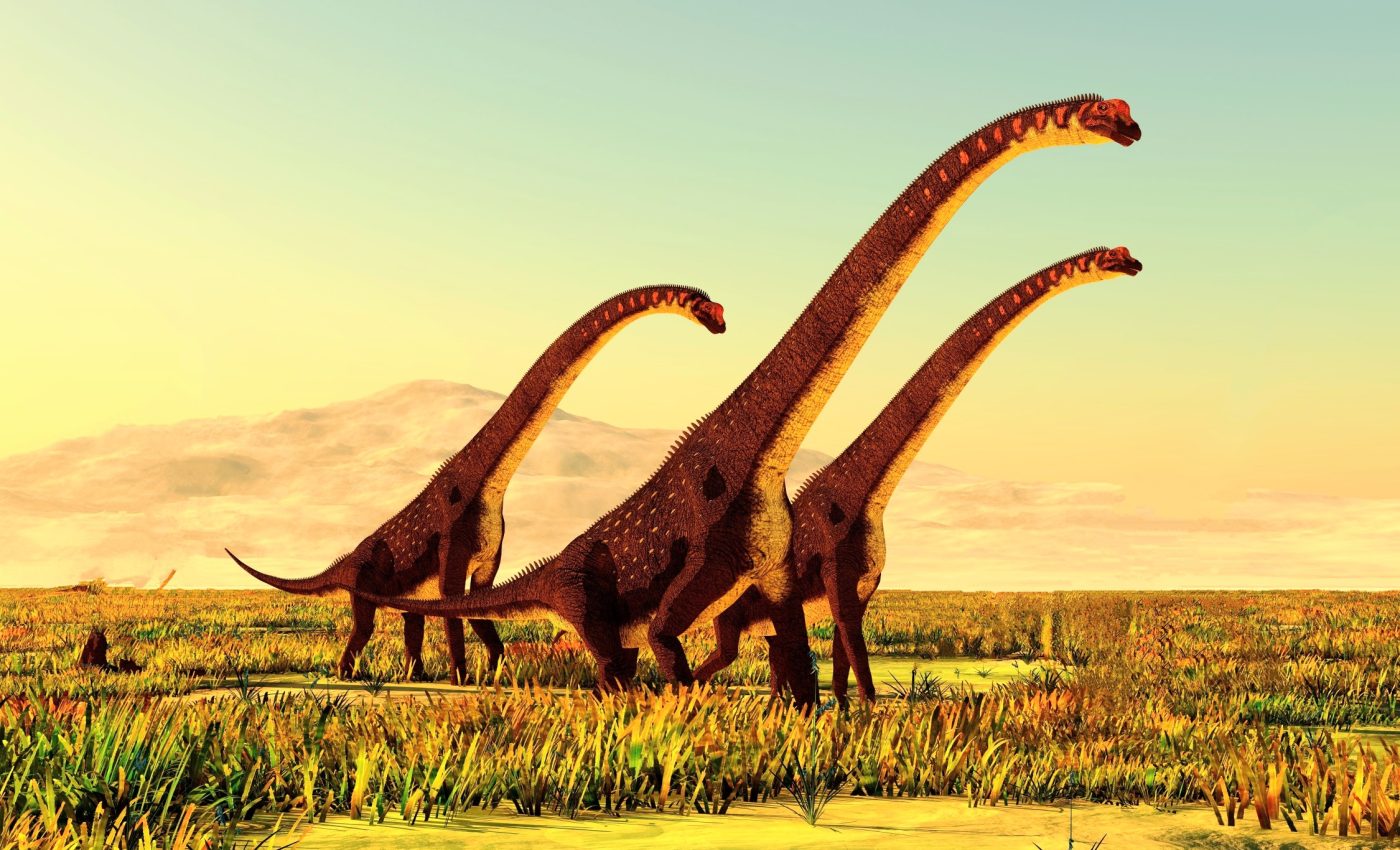
Giraffatitan's tail contributed to its stability and locomotion
Giraffatitan was a huge sauropod dinosaur, but its tail was not a stiff anchor bolted to the hips. New digital models show a tail that lifted, bent, and twisted with control, helping the animal move and stay stable.
The study was led by Dr. Verónica Díez-Díaz from the Museum of Naturkunde in Berlin. Her team worked from a well preserved section of the tail, including 18 vertebrae and 14 associated bones beneath them. Their goal was to map how each joint could move, bone against bone, without guessing about soft tissues.
Giraffatitan’s tail movement
The researchers built precise 3D joints and rotated each vertebra until the bones would either separate or collide. That produced upper limits on bending upward, downward, sideways, and twisting, all based on what the skeleton itself allows.
They anchored the work in a specimen labeled MB.R.2921 from Tanzania’s Late Jurassic rocks. The researchers identified a mechanical observation: changing the location of each joint’s center of rotation altered the amount of safe motion.
They also compared several possible joint centers to see which ones produced the highest or most realistic ranges. That sensitivity test matters because in living animals the true center can shift slightly as forces change during motion.
Special tail bones limited downward bend
Many sauropod dinosaurs have special tail bones called hemal arches. These are thin, V shaped bones that hang under each tail vertebra and protect blood vessels while anchoring parts of the tail’s underside muscles.
“Our results highlight the importance of considering haemal arches as functional units and osteological constraints in ventroflexion of the tail,” wrote Díez-Díaz. Hemal arches acted like hard stops that limited how far the tail could bend downward.
That is not just a small tweak to a model. It changes how we picture tail posture in life, because downward bend is the motion that hemal arches most resist.
Tail helped movement and lift
The tail’s upper bend was strongest in the middle section and weaker close to the hips. That pattern fits the shape of the joints and the tall spines on the front vertebrae, which act like built-in stops.
Lateral bend and small amounts of twist were also possible, though both were capped by the facet joints called zygapophyses that interlock neighboring vertebrae. Those same joints are nature’s guardrails that keep the spine aligned when the animal moves.
Earlier work by this team mapped the big tail muscles on Giraffatitan, including the powerful caudofemoralis longus that helps pull the hind legs back. That reconstruction showed where muscles attached and how they could have powered the base of the tail.
Put together, the current ranges of motion and the earlier muscle map point to a tail that stayed off the ground, stabilized the hips, and contributed to smooth strides. It was a moving part of the animal’s gait, not a dead weight.
Giraffatitan‘s tail made walking efficient
The baseline model suggested that the tails can even set the rhythm for efficient walking, at roughly 2.9 miles per hour (4.7 kilometers per hour) which would have been a comfortable walking pace.
The method uses the tail’s natural frequency to find the speed that costs the least energy, which emphasizes why tail mechanics matter beyond simple posture.
Myths versus real Giraffatitan limits
Popular media often implies thunderclap tail whips that break the sound barrier. Testing of a diplodocid style tail found a top speed near 108 feet per second (33 meters per second), which is far below the speed of sound in air.
That converts to about 74 miles per hour (119 kilometers per hour) at the tip, which is fast but not supersonic. For Giraffatitan, the new joint limits suggest controlled, useful movement, not fragile, boom producing snaps.
Why flexible tails matter
Across animals, tails serve for balance, maneuvering, signaling, swimming, and more. A broad integrative review points out that tails are multifunctional tools that have drawn less attention than limbs, even though they often do as much work.
Applying that mindset to sauropods helps explain why a flexible, lifted tail makes sense. It frees the hips to conserve energy, keeps the body stable on uneven ground, and gives room for small course corrections during turns.
How joints changed flexibility
The study shows that picking a joint’s centres of rotation is not a throwaway choice. Move the center a little, and the calculated range can grow or shrink, especially for upward bending and twisting.
By reporting several reasonable choices, the team made it easier for future studies to compare apples to apples. It also makes the results more transparent, so modelers can reproduce the work and test new ideas.
Museum models show lifted tails
Museum mounts that let the tail float, not drag, are on the right track. The new limits match that look and give animators and exhibit designers numbers they can defend.
There is still more to learn. Soft tissues like cartilage, ligaments, and muscle bulks will trim these skeletal limits in life, but the bone based cap is a solid place to start.
When we picture how a giant moves, we change how we think about its world. A tail that can lift and steer alters group spacing, defense options, and even how tracks form in wet ground.
It also shows how science works on long-extinct animals. Careful modeling of real bones, step by step, beats catchy myths every time.
The study is published in Royal Society Open Science.
—–
Like what you read? Subscribe to our newsletter for engaging articles, exclusive content, and the latest updates.
Check us out on EarthSnap, a free app brought to you by Eric Ralls and Earth.com.
—–













